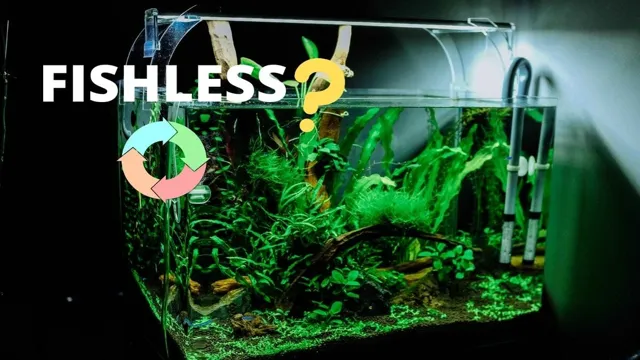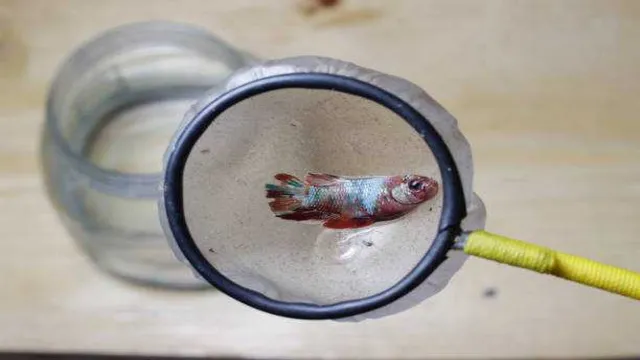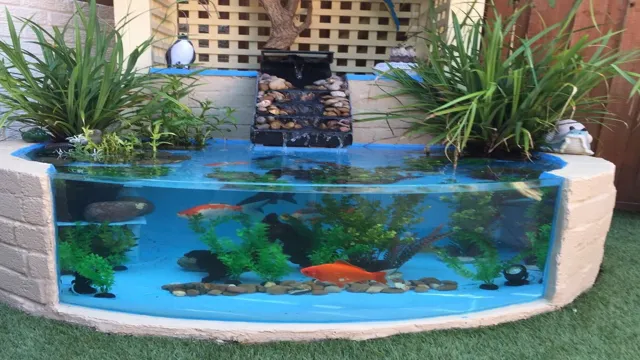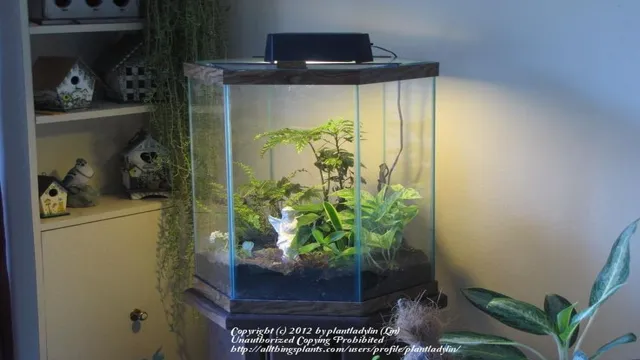Changing the substrate of your aquarium can be a necessary task for maintaining the health and cleanliness of your fish tank. But what do you do when you have fish already living in the tank? It can be a bit daunting to think about completely uprooting your fish and their environment. But fear not, with the right steps and precautions, you can safely change your substrate without putting your fish at risk.
In this article, we’ll go over everything you need to know about changing aquarium substrate with fish in the tank, including the right tools to use, how to prepare your fish, and the step-by-step process for successfully replacing the substrate. So grab your gloves and let’s get started!
Preparation
If you’re wondering how to change aquarium substrate with fish in the tank, preparation is key. First, make sure you have all the materials you need, including a clean bucket, a siphon, new substrate, and a gentle filter. Next, start by removing any decorations, plants, or toys in the tank so that you can access the substrate.
Use the siphon to remove as much of the old substrate as possible, being careful not to disturb your fish or their environment too much. You can also use a net to gently scoop up any debris that has settled at the bottom of the tank. Once you’ve removed the old substrate, replace it with the new one, making sure to rinse it thoroughly first.
Before adding anything back into the tank, test the water to make sure the pH, temperature, and other levels are stable. Finally, add your decorations, plants, and toys back into the tank and give your fish a little extra attention to make sure they’re adjusting well. With careful preparation and a gentle touch, you can safely change your aquarium substrate without harming your fish.
Test Water Parameters
If you’re a fish owner, checking the water quality in your aquarium is crucial for your pet’s health. By accurately testing the water parameters, you can ensure that your fish are thriving in a clean and safe environment. Before testing, you must first prepare your aquarium by cleaning the sides and bottom with an aquarium-safe cleaner, as well as replacing at least 25% of the water with dechlorinated water.
It’s essential to test for ammonia, nitrate, nitrite, pH, and water hardness. An ideal pH range for most freshwater aquariums is between 5 and
0, and water hardness should be between 6 and 12 degrees. Testing your water parameters regularly can help you quickly address any issues and ensure that your pets live in a healthy environment. Don’t forget to take notes of your test results so that you can adjust any necessary changes in your aquarium’s water conditions.
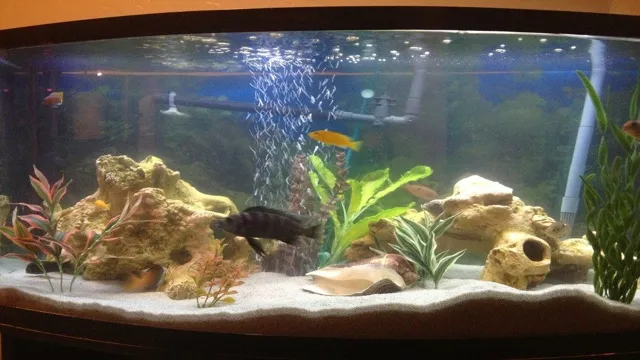
Remove Decorations and Plants
When it comes to preparing your home for a move, it’s essential to remove all decorations and plants from your living space. While a beautiful houseplant or a lovely painting can add character and charm to your home, they can also make it challenging to move out quickly and efficiently. To make things easier on yourself and on your movers, start by taking down any wall decor, taking apart any large plants, and storing them safely until after the move.
This practice will not only save you time but also help prevent any damage to your belongings or the walls during the moving process. Additionally, if you plan on selling your home shortly after moving out, removing decoration and plants can help minimize the need for any potential touch-ups or repairs. By taking these simple steps in advance, you can make the process of moving out a much smoother and less stressful experience for everyone involved.
Prepare New Substrate
Preparing a new substrate is a crucial step in any planting project. Before you start, you need to remove any debris or weeds from the area you plan to plant in. Once the area is cleared, it’s time to prepare the substrate.
This involves loosening the soil to a depth of at least six inches with a tiller or garden fork. Then you’ll need to add fertilizer and organic matter to improve the soil’s nutrient content and structure. The type and amount of fertilizer and organic matter you choose will depend on the plants you plan to grow.
Don’t forget to mix the fertilizer and organic matter thoroughly into the soil to ensure even distribution. Once you’ve finished preparing the substrate, it’s time to plant your plants, and watch them grow!
Clean the Tank’s Interior Surfaces
When it comes to cleaning the interior surfaces of your tank, there are a few important steps to take before diving in. First, you’ll need to ensure that the tank is completely empty and all fish and plants have been removed. Any remaining water should be drained, and the tank should be wiped down with a clean cloth to remove any debris or dirt.
It’s important to note that you should never use soap or detergent, as this can be harmful to any future inhabitants of the tank. Instead, opt for a vinegar and water solution or a specialized aquarium cleaner. Once you’ve prepared your cleaning solution, use a non-abrasive sponge or brush to scrub the surfaces of the tank, paying special attention to any corners or crevices where debris may have accumulated. (See Also: How to Build Overflow and Input for Aquarium: A Step-by-Step Guide for Beginners)
Rinse the tank thoroughly with clean water, and allow it to air dry completely before adding any new water or inhabitants. By following these steps, you can ensure that your tank remains a healthy and safe environment for all of its inhabitants.
The Change Process
Changing aquarium substrate can be a daunting task, but it is possible to do it safely with fish still in the tank. First, it’s essential to prepare the new substrate and thoroughly rinse it to remove any particles or debris. Then, begin the process by removing a quarter of the old substrate and replacing it with the new one.
Repeat this process every week until all of the old substrates are replaced. When doing so, make sure to avoid disturbing the fish, and keep a close eye on the water parameters to check for any fluctuations. It’s also crucial to remember to maintain proper filtration and water quality throughout the process.
By taking these steps slowly and carefully, changing your tank’s substrate can be a stress-free process for you and your fish. So go ahead and give your aquarium a fresh start!
Remove a Small Portion of Old Substrate
When it comes to changing an aquarium substrate, removing a small portion of the old substrate at a time is a smart move. This strategy helps to maintain a stable environment within the tank and prevent shock to the fish’s system. Depending on the size of the tank, removing a few inches of substrate every week or two should be sufficient.
Doing so will also prevent any harmful substances from being released into the water column, which could compromise the safety of your fish. Keep in mind that this process may take some time, but it’s definitely worth it to ensure a healthy living space for your aquatic pets. By taking small, intentional steps, you’ll keep your fish comfortable and happy while you work towards achieving a successful substrate change.
Add the New Substrate Gradually
When adopting a new substrate for your aquarium, it is crucial to proceed gradually to ensure a smooth change process for your aquatic pets. Adding the new substrate in one go can shock your fish and potentially harm their health. The best approach is to introduce the new substrate slowly over a period of a few weeks.
During this time, mix a small amount of the new substrate with the old one and monitor your tank’s conditions daily. If everything looks stable, continue to add more of the new substrate gradually. Remember to keep an eye on your fish and their behavior, as any significant changes could indicate stress.
The gradual approach may require a little more patience, but it is worth it for the health and well-being of your aquatic friends.
Reintroduce Decorations and Plants
When it comes to redecorating your home or office, one thing that can make a big difference is reintroducing decorations and plants. Not only do they add visual interest and color to a room, but they can also improve air quality and boost your mood. The change process can be simple – start by assessing the space and identifying areas where you can add a plant or decoration.
Consider the lighting and temperature of the room to ensure you choose a plant that will thrive. When it comes to decorations, think about what will complement the existing color scheme and style of the room. Adding a pop of color or a unique statement piece can give the room a whole new feel.
It’s important to balance the decorations with the plants and ensure they complement each other rather than clash. Overall, reintroducing decorations and plants can be a fun and easy way to spruce up your space and make it feel fresh and inviting.
Monitor Water Parameters
When it comes to monitoring water parameters, it’s important to keep in mind that it’s not a one-time process. Rather, it’s an ongoing change process that requires regular attention and adjustment. This is because water parameters are influenced by a variety of factors such as temperature, pH, dissolved oxygen, and nutrient levels, all of which can fluctuate over time. (See Also: How to Keep Aquarium Sand White: Tips and Tricks for Crystal Clear Substrate Maintenance)
By monitoring these parameters regularly, you can identify any changes and take steps to correct them before they become detrimental to aquatic life. One key tool for monitoring water parameters is a water quality meter, which can measure multiple parameters at once, providing a comprehensive picture of the water’s health. So remember, monitoring water parameters is an essential, ongoing process that requires consistent attention and adjustment to ensure the health of aquatic ecosystems.
Tips and Tricks
Changing the substrate in your aquarium can seem like a daunting task, especially if you have fish in the tank. However, it’s essential to keep the substrate clean to maintain a healthy environment for your aquatic pets. Here are some tips and tricks on how to change aquarium substrate with fish in the tank.
Firstly, it’s recommended to change only a portion of the substrate at a time, rather than the entire tank. This way, you can minimize any stress or shock that your fish may experience during the process. Take out the fish and place them in a separate container with aquarium water to keep them safe.
Next, scoop out a portion of the substrate using a clean container or siphon. Once you’ve removed enough, use a gravel vacuum to clean any remaining debris and leftover waste. Repeat this process until you’ve replaced all the substrate in the tank.
When it comes to choosing a new substrate, consider factors such as your fish species and the type of plants in your aquarium. Research the ideal substrate for your specific needs and preferences before purchasing. Additionally, introduce the new substrate gradually, allowing the tank water to adjust to prevent any sudden changes in water chemistry.
In conclusion, changing the substrate in your aquarium with fish in the tank is possible with a little bit of planning and patience. By taking the necessary steps and precautions, you can ensure a smooth and stress-free process for your fish while maintaining a clean and healthy environment for them to thrive. Don’t forget to regularly clean your substrate to keep your aquarium in top condition!
Use an Aquarium Vacuum to Clean the Tank Regularly
Keeping your aquarium clean is a crucial part of maintaining a healthy and happy environment for your aquatic pets. One of the best ways to do this is by using an aquarium vacuum. This handy device is designed to remove debris, waste, and unwanted particles from the bottom of your tank, keeping it clean and fresh.
When you’re using the vacuum, it’s important to move it inch by inch along the bottom of the tank, taking care not to disturb the substrate. This will help to ensure that you’re capturing all of the dirt and debris and leaving your tank looking sparkling clean. To make the process more efficient, you should also perform regular partial water changes and maintain your filter regularly.
By keeping up this routine, you can help to reduce the risk of illness and disease, and ensure that your aquatic friends stay happy and healthy.
Avoid Overstocking the Tank
When it comes to setting up an aquarium, one of the common mistakes that beginners make is overstocking. It can be tempting to fill the tank with as many fish as possible, but doing so can harm the fish and the overall health of the ecosystem. Fortunately, there are tips and tricks that can help you avoid overstocking and keep your aquarium thriving.
First, research the specific needs of the fish you want to keep. Some fish require larger tanks and certain water conditions, so make sure you have the appropriate set up before adding them to your tank. Second, don’t rely solely on the size of your tank to dictate how many fish to keep.
The general rule of thumb is to include one inch of fish per gallon of water, but this can vary depending on the species. Lastly, keep an eye on the behavior of your fish. If they are showing signs of stress or aggression, it may be a sign that your tank is overstocked.
By following these tips, you can create a healthy and happy aquarium for both you and your fish.
Consider Quarantining the Fish during the Change
If you want to ensure your fish’s health during water changes, it’s a good idea to consider quarantining them during the process. This may seem like an extra step, but it can prevent some potentially harmful effects on your aquatic pets. When you change the water in your tank, you disrupt the balance of the aquarium’s environment and expose your fish to new conditions. (See Also: How to Make Aquarium Water Purifier: A Step-by-Step Guide)
This can stress your fish, making them more susceptible to illness and disease. If you have multiple fish in your tank, you also run the risk of introducing harmful pathogens to healthy fish. Quarantining your fish in a separate tank during and after the water change can help prevent these issues and keep your fish healthy.
It’s an extra step that can ensure the long-term health and well-being of your aquatic pets.
Conclusion
In conclusion, changing your aquarium substrate with fish in the tank might seem daunting, but with a little planning and care, it can be a smooth and successful process. Remember to prepare your new substrate ahead of time, take it slow, and monitor your water parameters closely. As the saying goes, “a clean substrate is a happy tank!” So roll up your sleeves, put on your fishkeeping hat, and give your aquatic friends a fresh start – they’ll thank you for it!”
FAQs
Can I change aquarium substrate with fish still in the tank?
Yes, you can, but it’s always better to move the fish to a temporary tank while changing the substrate.
How often should I change my aquarium substrate?
It’s recommended to change your aquarium substrate every 6-12 months, depending on the type of substrate and the size of your tank.
What is the best substrate for a planted aquarium?
A good substrate for a planted aquarium should be nutrient-rich and provide enough oxygen to plant roots. Clay substrate or a specialized plant substrate can be a good choice.
Can I mix different types of substrate in my aquarium?
Yes, you can mix different types of substrate in your aquarium, but make sure they are compatible with each other.
Do I need to rinse my aquarium substrate before adding it to the tank?
Yes, it’s always recommended to rinse your substrate thoroughly before adding it to the tank to remove any dirt, dust or debris.
How do I remove old substrate from my aquarium?
To remove old substrate, you can use a siphon tube to vacuum the substrate out of the tank. Make sure to vacuum only a small portion of the aquarium floor to avoid disturbing the fish too much.
What should I do if my fish start digging in the substrate after I change it?
If your fish start digging in the substrate, it’s a good thing as it means they are exploring their environment. However, keep an eye on them to ensure they don’t eat the substrate, which can cause digestive issues.



